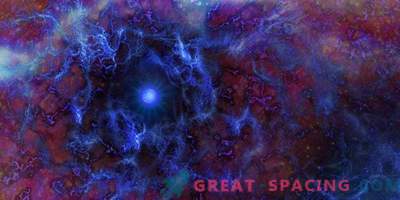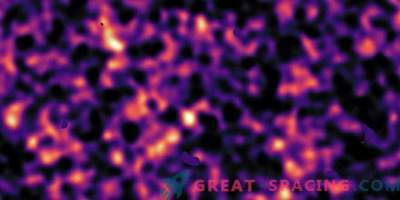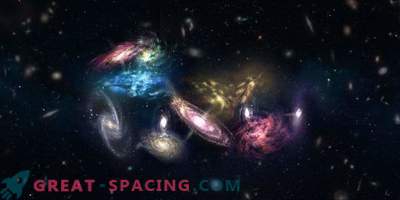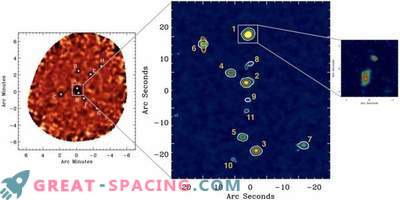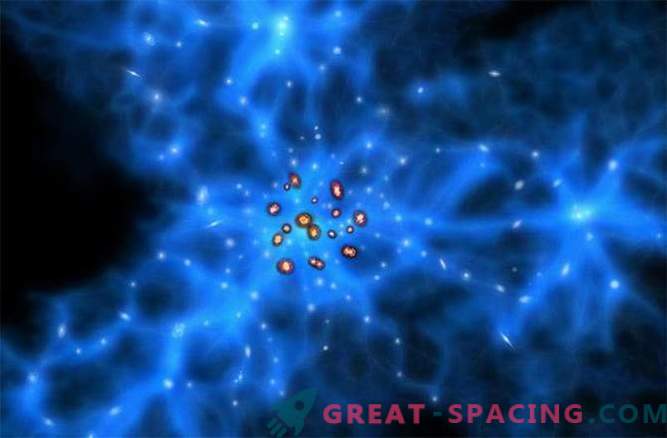
According to new observations, conducted through one of the most powerful observatories - Atakamsky Large millimeter / submillimeter grid or abbreviated as ALMA (from English), a monstrous concentration of galaxies was observed, passing near the place of active star formation on the border of our Universe and dark matter node .
Universes are completely filled with the last (dark matter) and represent the network, in form resembling a convex 3D model. Like most galaxies and star clusters, they are located forward to Earth, which is why we can clearly observe this phenomenon. Although in fact it is very difficult to see dark matter even with the help of the newest tools, since it does not interact with the light. The human eye can only fix the gravitational interaction in space. In addition, scientists managed to find out that it is dark matter that makes up almost 85% of all matter in the Universe.
In order to understand how black matter has managed to influence the formation of earlier galaxies before the Big Bang, it is necessary to estimate as precisely as possible the structure and approximate duration of the evolution of the modern Universe. This is necessary because newly discovered clusters of massive star formations, embedded at the junction of parts of black matter and having emerged more than 11.5 billion years ago, can help us figure out why none of these monstrous galaxies initially disappeared from the modern Universe, and also acquired an elliptical form. Up to this point there were no problems with observing the galaxies. But for these radial, which existed from the earliest eras of our universe, it is very difficult to observe. Not only are they almost completely filled with black matter, they also contain a huge amount of cosmic dust. Radio telescopes require considerable effort to accurately determine their location. But there is a plus. Galaxies generate and emit high-frequency submillimeter-wave flows, to which ALMA is sensitive.
According to the approximate measurements between the 9th massive galaxies there is a small piece of sky called "SSA22" in the constellation Aquarius. Astronomers were able to compare SSA22 with observations made at the National Astronomical Observatory of Japan (from the English abbreviated "ASTE") through the Atacama submillimeter telescope in visible light and the new Subaru telescope. Subaru and ASTE have already surveyed this area and derived the general outline of a cluster of galaxies. From these measurements, the gravitational location of the massive intersection of pieces of dark matter can be accurately determined, and now scientists are positioning them as objects inside the dark matter node with intersecting fibers. It seems that this conclusion confirms the idea that the most massive galaxies of the Universe were formed from massive clusters of dark matter. These early massive galaxies, as scientists believe, can further develop into elliptical shapes that we used to observe today. You can also conclude that massive elliptical galaxies spent many years deep within the gravitational embrace of massive dark matter clusters, like the SSA22 node found a couple of billions of years after the Big Bang.
